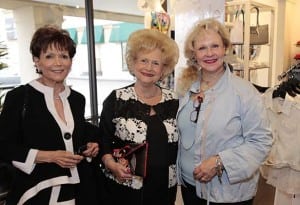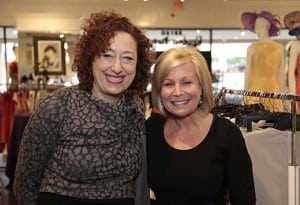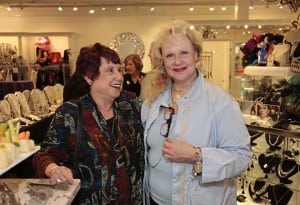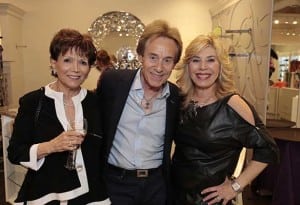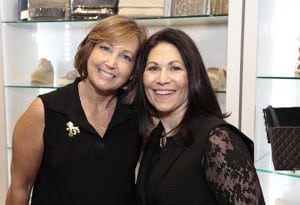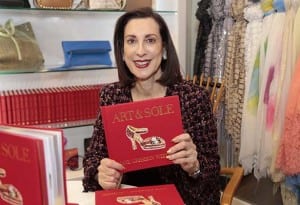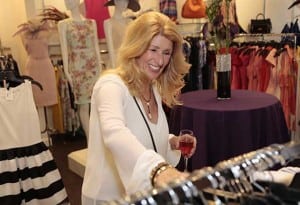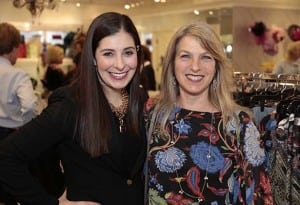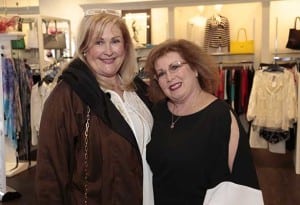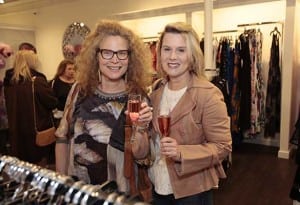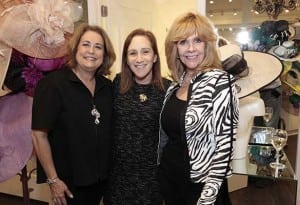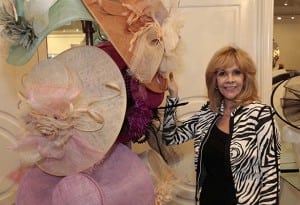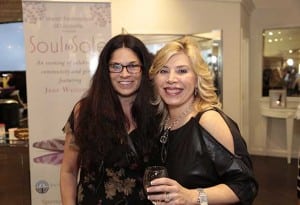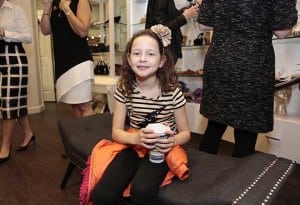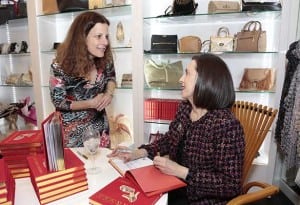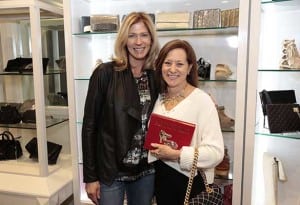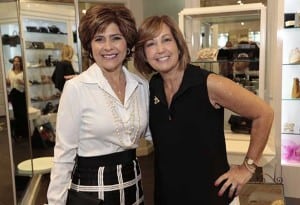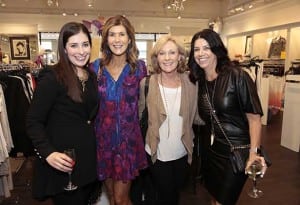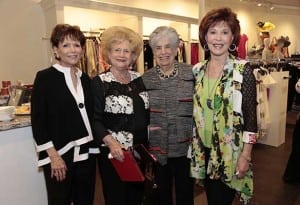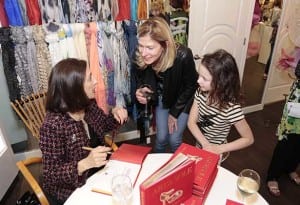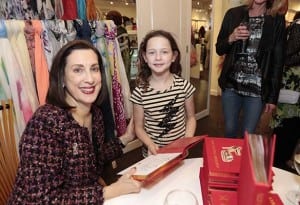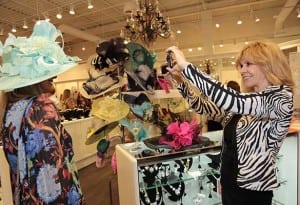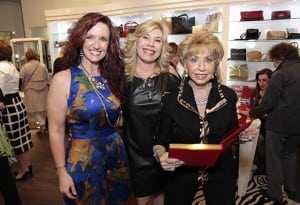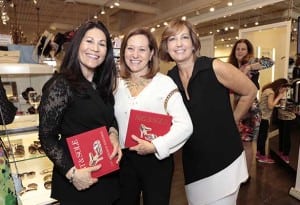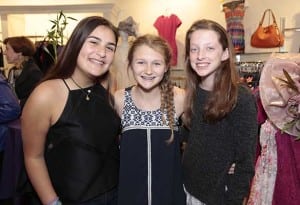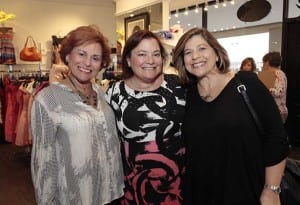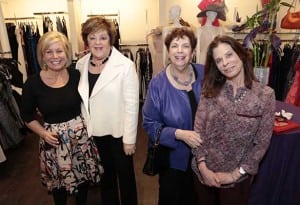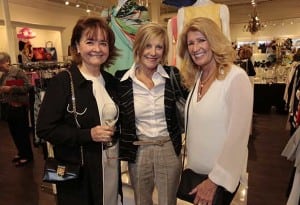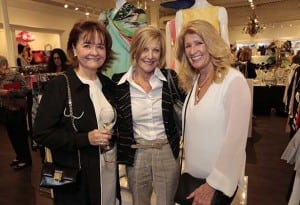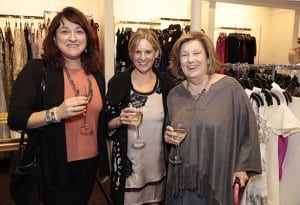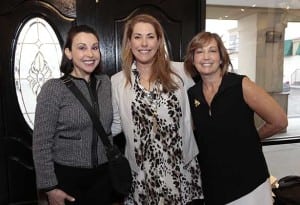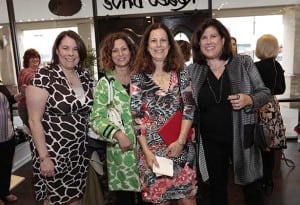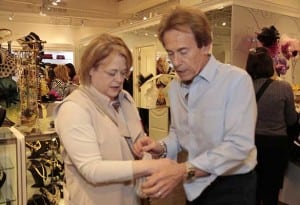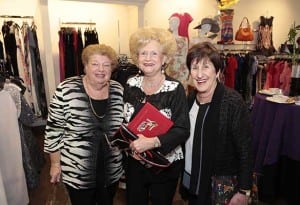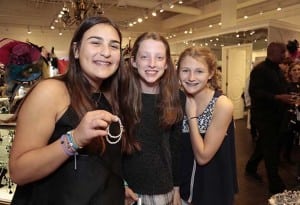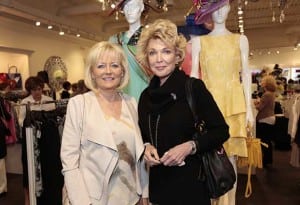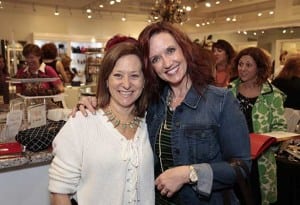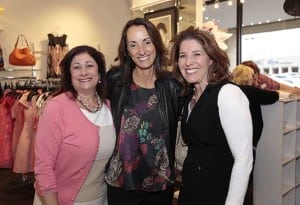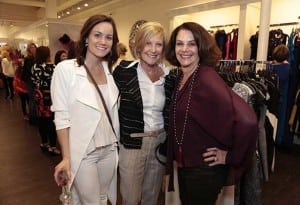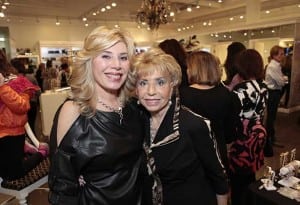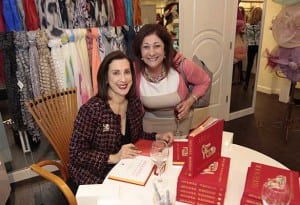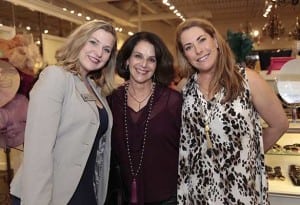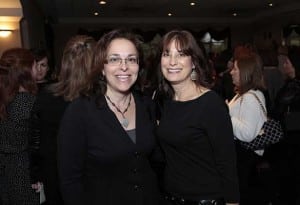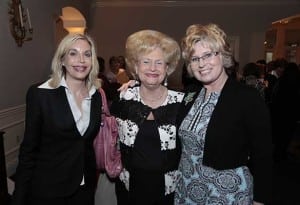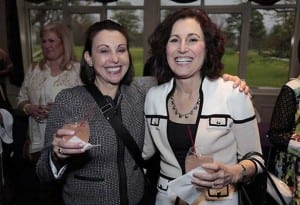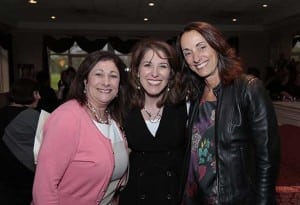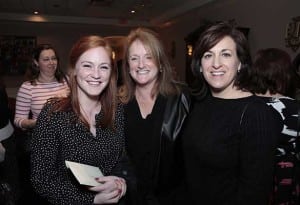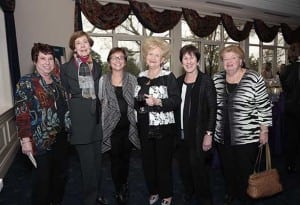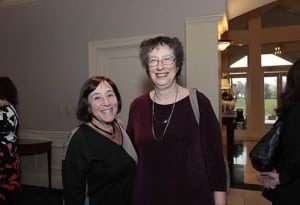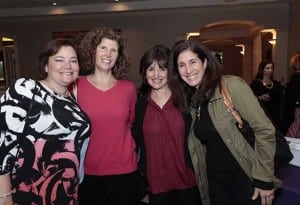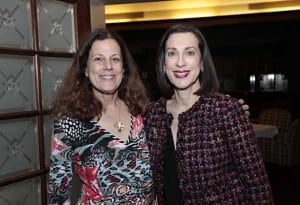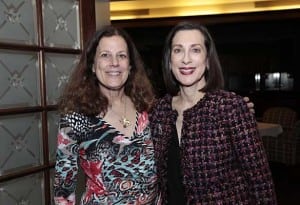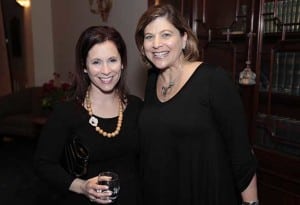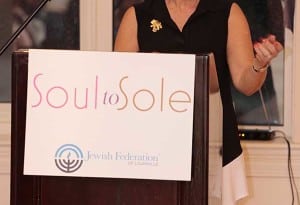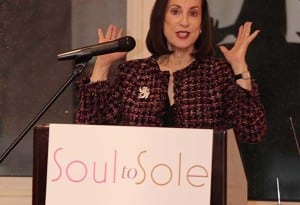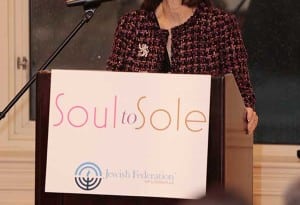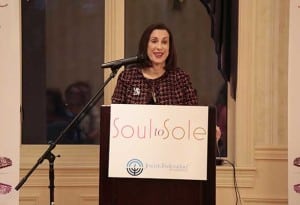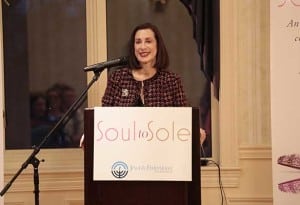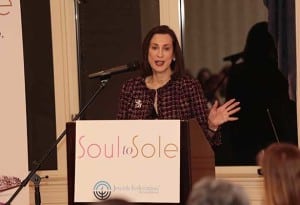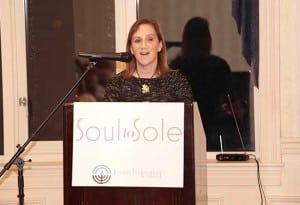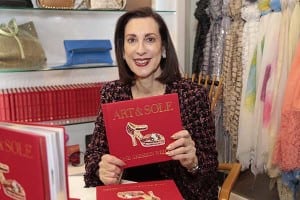 Undeterred by pouring rain, women from across the community came out on Thursday, March 24, for the Jewish Federation of Louisville’s Women’s Philanthropy event, Soul to Sole, with Jane Weitzman. Weitzman share her passion for JDC’s (the American Jewish Joint Distribution Committee) vital work, made possible by Federation campaigns, including Louisville. She has served on JDC’s Board for 25 years.
Undeterred by pouring rain, women from across the community came out on Thursday, March 24, for the Jewish Federation of Louisville’s Women’s Philanthropy event, Soul to Sole, with Jane Weitzman. Weitzman share her passion for JDC’s (the American Jewish Joint Distribution Committee) vital work, made possible by Federation campaigns, including Louisville. She has served on JDC’s Board for 25 years.
As the event featured the former marketing maven and owner of Stuart Weitzman Shoe Stores, it was appropriate that the evening started with a shopping event and reception at Rodeo Drive. Weitzman was available to sign copies of her book, Art and Sole, and to visit with those in attendance.
For Weitzman’s main presentation, the group moved to Standard Club, made available to the community by Jewish Heritage Fund for Excellence.
During introductory remarks, the evening’s emcee WLKY news anchor Vicki Dortch said, “It’s an honor to be surrounded by such caring, passionate busy women – women who take good care of their families, their children, their parents, their careers and volunteer. Now volunteers don’t necessarily have a lot of time, but they have a lot of heart, and I commend you for all of the work that you do making philanthropy and caring and this community priorities in your life.”
Event Chair Julie Ensign welcomed everyone and introduced Weitzman, who successfully integrated tikkun olam into her Stuart Weitzman Shoe Stores, through the use of art shoes, window displays and a genuine concern for making the world a better place.
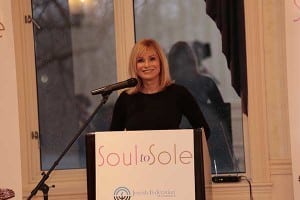 Starting with anecdotes about a prominent New York physician who misattributed the Talmudic saying the if you save one life, it is as if you saved the whole world to the Chinese and a woman who, at a fundraiser, said, “you can make a huge difference for $5 million,” Weitzman focused on the wonderful things that the Jewish community accomplishes, particularly through JDC, “the rescue arm of the Jewish people,” for much smaller amounts of money.
Starting with anecdotes about a prominent New York physician who misattributed the Talmudic saying the if you save one life, it is as if you saved the whole world to the Chinese and a woman who, at a fundraiser, said, “you can make a huge difference for $5 million,” Weitzman focused on the wonderful things that the Jewish community accomplishes, particularly through JDC, “the rescue arm of the Jewish people,” for much smaller amounts of money.
After the fall of the Soviet Union, Weitzman participated in JDC’s first mission to St. Petersburg. Her group visited an elderly woman who lived in a communal apartment. Seven families with nothing in common had been thrust together into what had been built for a single family. All of them, including several children, shared a kitchen and a single bathroom. The woman had her own very small room and, since she couldn’t make it to the chesed, the JDC-run Jewish community center, social workers from the chesed visited her regularly.
Asked if she experience anti-Semitism, the woman replied, “There’s a woman who lives here who goes out of her way every day to tell me how much she hates Jews, but there’s no real anti-Semitism.” While she was answering this question, Weitzman noticed an ancient television in the room. A crocheted doily hung down blocking part of the screen. Weitzman asked if the set worked and was told, no, it hadn’t worked in years. It was just one of the woman’s possessions – a piece of furniture.
When Weitzman left the apartment, she asked the social worker how much a new TV costs and was told about $150. “I pulled the cash out of my pocket, gave it to him and forgot all about it,” Weitzman said, “because we went on to see people living under much worse conditions.
“Several months later,” she continued, “I got a big envelope from JDC’s office in NY and in the envelope were photographs of the woman, the social worker and the TV set, and the woman and the TV set. You would think I had given the $5 million.”
 There were also two letters in the envelope – the original, in Cyrillic, and a translation. “It said something like you have saved my life, you have given me a life,” Weitzman said. “I have theatre; I have movies; I have concerts. You have changed everything for me.”
There were also two letters in the envelope – the original, in Cyrillic, and a translation. “It said something like you have saved my life, you have given me a life,” Weitzman said. “I have theatre; I have movies; I have concerts. You have changed everything for me.”
Upon discovering the impact of her $150 gift, Weitzman brought the issue to the next JDC Board meeting and through JDC, inaugurated a program to repair or replace televisions for elderly, isolated Jews like the woman she had met, and made a real difference in their lives.
Another issue JDC identified in the huge Soviet apartment buildings is that although people shared space and lived in very close proximity, they didn’t know each other. As JCD identified Jewish clients in the same buildings, the agency connected them to each other, breaking down their isolation.
For thousands of years, Weitzman pointed out, Jews have taken care of each other. “That’s really how we survived,” she said. But she is worried that today, we’re losing that connection.
“We have so many opportunities to do good and help people,” she explained. “We give to medical research and the arts and all the things we love to do, but we’ve forgotten that we need to take care our own people.”
“Our children do not understand that this is their legacy,” she continued, “so bar and bat mitzvah projects all over the United States are not Jewish. That’s fine, but they also need to have a second project that is Jewish and they need to learn that they are responsible for their own people.”
Using a brief slide presentation, Weitzman pointed out ways that JDC helps Jews around the world from an old age home in Mumbai India to support for the last 11 Jewish women living in Cairo, Egypt to a family displaced by the violence along Ukraine’s border with Russia to a young man in Israel who was so traumatized he lost the ability to speak but today runs a restaurant. For all these people and many others, support from Federation Campaigns, including the one in Louisville, has made the difference.
In Havana, Cuba, Weitzman explained, JDC figured out a way to get food to the impoverished Jewish community, telling authorities that the Jewish community needed to eat chicken on Friday nights. That reasoning was extended and by insisting that Jews needed kosher food, JDC was able to open kosher markets to provide food to the community.
Weitzman is very hands-on in her tikkun olam endeavors. In Israel, public schools get out a 1 p.m. For poor children, that often means they don’t have lunch. So working with JDC, Weitzman found a school where most of the students were from poor families and she adopted three classes with a total of 160 children. By providing for these children, she created opportunities for them to learn and succeed and look toward the future. “At least I know that these kids will all go to college and if they don’t, they will learn some trade. They will go to fashion school or culinary school or something so that instead of being a burden to the state, they will be assets.”
In addition to her work with JDC, Weitzman devotes time and energy to support cancer awareness and research. Initially her efforts focused on breast cancer, but, she pointed out, there has been such emphasis on breast cancer that most people know the symptoms of breast cancer and what steps to take to detect and treat it.
So, after losing two friends to ovarian cancer, she shifted her focus and challenged all the women in the room to become familiar with those symptoms. “Every single symptom is a duplicate symptom [of another illness],” she stated, urging those present to become vigilant. “So if you have the symptoms, you probably don’t have it, but you could.”
SYMPTOMS OF OVARIAN CANCER
The symptoms of ovarian cancer are often overlooked. According to the Cancer Center website, wwww.cancercenter.com, the signs of ovarian cancer may be different for each woman and any of them might be caused by noncancerous conditions.
The ovaries are located near the bladder and the intestines, so ovarian cancer often manifests with gastrointestinal symptoms which may include:
-Persistent abdominal bloating, indigestion or nausea;
-Changes in appetite, often a loss of appetite or feeling full sooner;
-Feelings of pressure in the pelvis or lower back;
-Needing to urinate more frequently;
-Changes in bowel movements;
-Increased abdominal girth; and/or
-Feeling tired or low energy.If these symptoms persist for several weeks, women are advised to see their doctors and get checked out. The problem might not be ovarian cancer, but it is important to determine the cause of the problem. The earlier ovarian cancer is detected the better the odds of beating it.
During the question and answer period, many of the questions focused on shoes.
Weitzman’s husband, Stuart, grew up in a family that manufactured shoes, and from an early age, he designed and created shoes that are stylish and comfortable.
When she was working, Weitzman ran the brick and mortar stores, starting with the store on Madison Avenue. She used the store’s windows to promote causes as well as sell shoes. Art shoes, created by artists to tell a story and never intended to be worn, dominated the displays. She would bring in real merchandise only when it complemented the art shoes and their message.
Jewish Community of Louisville President and CEO Sara Wagner closed out the evening by sharing some highlights from the past year’s JCC at 125 celebration and the current Campaign, and focusing on the future.
She called on those present to take an active role as participants and leaders in the community as volunteers and supporters. “It’s not your mother’s Federation or your grandmother’s Federation anymore,” she said.
 She identified three areas the 2016 Campaign is focusing on: children and youth; caring for the vulnerable; and connecting with the global Jewish community. Wagner called on those present to give generously to the Campaign, and encouraged everyone to contact Vice President of Philanthropy Stacy Gordon-Funk, Development Director Lenae Price or herself to learn about specific opportunities to volunteer and to explore ways to connect with the global Jewish community, to see the work of JDC first-hand.
She identified three areas the 2016 Campaign is focusing on: children and youth; caring for the vulnerable; and connecting with the global Jewish community. Wagner called on those present to give generously to the Campaign, and encouraged everyone to contact Vice President of Philanthropy Stacy Gordon-Funk, Development Director Lenae Price or herself to learn about specific opportunities to volunteer and to explore ways to connect with the global Jewish community, to see the work of JDC first-hand.
Weitzman spent two days in Louisville prior to the event and a series of volunteers made sure she stayed busy, taking her to the Speed Museum, the mansion at Churchill Downs and much more.
Rodeo Drive offered specials and, thanks to Raquel Koff and Michelle Tasman, donated a percentage of the sales to the Federation Campaign. Heaven Hill, thanks to the Shapira and Latts families, provided the beverages, including Pama and champagne.




